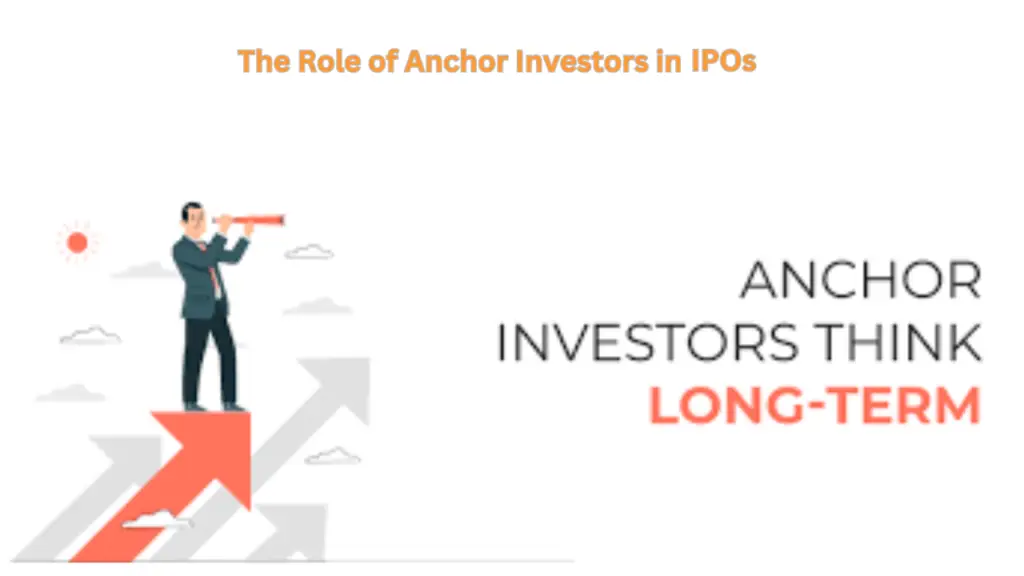In the world of Initial Public Offerings (IPOs), anchor investors are considered the cornerstone of stability and trust. These large institutional investors commit to buying a significant portion of shares before the IPO hits the market, signaling confidence and ensuring a smooth launch. However, what often goes unnoticed is the risk of over-reliance on these investors, which can skew market dynamics and lead to long-term volatility.
This article explores the hidden dangers of depending too heavily on anchor investors and offers solutions to mitigate these risks.
Table of Contents
ToggleAre Anchor Investors Really Stabilizing IPOs or Creating Hidden Volatility?
While anchor investors can lend credibility and support to an IPO, their significant shareholdings can inadvertently distort the true market dynamics. Let’s dive into the core risks that come with relying too heavily on them.

Market Manipulation: The Risk of Artificial Stock Prices
When anchor investors hold a large portion of shares, they possess considerable influence over the stock price. This power can lead to artificial inflation or deflation, causing the stock’s value to mislead other investors.
For example, if anchor investors artificially drive up demand, retail investors may overpay, leading to potential losses when the stock corrects after the IPO.

Reduced Liquidity: Why Fewer Shares Mean Higher Volatility
Another major concern is reduced liquidity. With a significant portion of shares tied up by anchor investors, there are fewer available for trading in the open market. This lower availability makes it difficult for other investors to buy or sell shares. In a less liquid market, even minor trades can cause sharp price fluctuations, increasing volatility.
How Overvalued Stocks Can Crumble Once Anchor Investors Exit
Overvaluation: The Illusion of High Demand
The presence of prominent anchor investors can sometimes create a false impression of high demand, leading to overvaluation. When shares are priced beyond their intrinsic value due to hype or perceived demand, the stock may experience a sharp correction once the anchor investors begin selling post-lock-in period, leaving other investors at a loss.
Dependence on Institutional Investors: Neglecting Retail Investors
When companies rely heavily on anchor investors, they risk becoming too dependent on institutional investors and neglecting the retail segment. Retail investors are critical for a balanced shareholder base, and their absence can make the stock more vulnerable to large swings, dictated by the actions of a few influential investors.
Exit Strategy Risks: Sudden Drops in Stock Prices
Once the lock-in period for anchor investors ends, there’s a chance they may choose to exit their positions all at once. This can cause a sudden drop in the stock price, signaling a lack of confidence in the company’s future. Such exits create an unfavorable market perception and impact the stock’s long-term stability.
The Global Risks of Market Manipulation by Anchor Investors
The risks posed by over-reliance on anchor investors are not limited to a single market. Globally, IPOs in mature markets like the United States and Europe have shown how these dynamics play out. In emerging markets, such as India, the risks can be even more pronounced due to less mature regulatory frameworks.
For instance, in India, the Securities and Exchange Board of India (SEBI) has introduced regulations to ensure transparency around anchor investors. Despite this, challenges like market manipulation, overvaluation, and reduced liquidity still persist.
What Paytm, Uber, and Facebook’s IPOs Teach Us About Anchor Investor Pitfalls
Several real-world IPO examples showcase the risks associated with heavy dependence on anchor investors:
- Paytm’s IPO: Despite high anticipation, Paytm’s stock price plummeted post-IPO, leading to significant losses for anchor investors.
- Facebook’s IPO: Technical glitches and concerns over valuation resulted in a stock price drop, affecting both anchor and retail investors.
- Uber’s IPO: Despite strong initial backing from anchor investors, Uber’s stock underperformed in the months following the IPO.
These cases highlight the risks of overvaluation, reduced liquidity, and sudden price drops when anchor investors exit.
Why Relying on Anchor Investors Can Limit Retail Participation and Liquidity
Limited Retail Participation: A Less Diverse Investor Base
When large institutional investors dominate an IPO, retail investors may feel excluded or hesitant to participate, believing the stock is already spoken for. This can lead to a less diverse investor base and diminish the stock’s long-term stability, as institutional investors tend to focus on short-term gains, while retail investors often provide long-term holding power.
Mitigating the Risks of Anchor Investors in IPOs
To navigate these challenges and create a balanced IPO, companies and regulators must take proactive steps:

Diversified Investor Base
Balancing institutional and retail participation ensures that no single group wields excessive influence over the stock, leading to a more stable market.
Transparent Communication
Companies should provide regular updates and maintain transparent communication with all investors. Clear information on performance and long-term goals can help mitigate fears of manipulation.
Regulatory Oversight
Strong regulatory frameworks can protect the market from manipulation and ensure that anchor investors don’t artificially inflate or deflate stock prices.
Extended Lock-in Periods
Extending the lock-in period for anchor investors can help prevent a sudden price drop once they exit, giving the stock more time to stabilize post-IPO.
Market Education
Educating retail investors about the role and potential impact of anchor investors can empower them to make informed decisions and participate more actively in IPOs.
Conclusion: Balancing the Role of Anchor Investors in IPOs
Anchor investors undoubtedly play a crucial role in ensuring the success of an IPO. However, companies must be wary of the risks posed by over-reliance on them, including market manipulation, overvaluation, reduced liquidity, and limited retail participation. By taking proactive measures to balance the involvement of institutional and retail investors, companies can create a more stable, transparent, and diverse market.
As the global financial landscape evolves, both companies and investors need to remain vigilant to navigate the hidden dangers associated with anchor investors, ensuring long-term success for all parties involved.

Jugaad on Two Wheels: The Hilarious Bike Parcel Hack in Karnataka
The Great Karnataka Bike Parcel Hack: A Jugaad Masterclass #RapidoParcel: In a creative yet controversial move, ride-hailing platform Rapido has found a way around Karnataka’s

Denmark’s Digital Sovereignty Revolution: Linux and LibreOffice Lead the Way
Introduction to Denmark’s Bold Move In June 2025, Denmark’s Ministry of Digital Affairs made headlines by embracing digital sovereignty, ditching Microsoft Windows and Office 365

🏏Sports as a Business Strategy: Insights from Vijay Mallya’s RCB Ownership
🧠 Sports as a Business Strategy (Tool) In modern business, few platforms offer better engagement and emotional connection than sports. From football clubs in Europe

🙏 Apologies in Leadership: Vijay Mallya Public Apology
🧠 Introduction: The Role of Apologies in Leadership In the corporate world, apologies aren’t signs of weakness—they’re strategic acts of leadership. When made with sincerity

Audiobook Production Costs: Navigating Recording Artists, Studio Expenses, and AI’s Impact
The audiobook industry is booming, with over 130 million listeners in the U.S. alone in 2021 and a growing global appetite for audio content. Producing

Media Trial of Vijay Mallya: How Public Perception Shaped Vijay Mallya’s Legacy
Introduction: Media’s Influence on Business Narratives In today’s hyper-connected world, media narratives can make or break a business reputation. For Vijay Mallya, once known as


1 thought on “The Hidden Dangers of Anchor Investors in IPOs: What Every Investor Needs to Know”